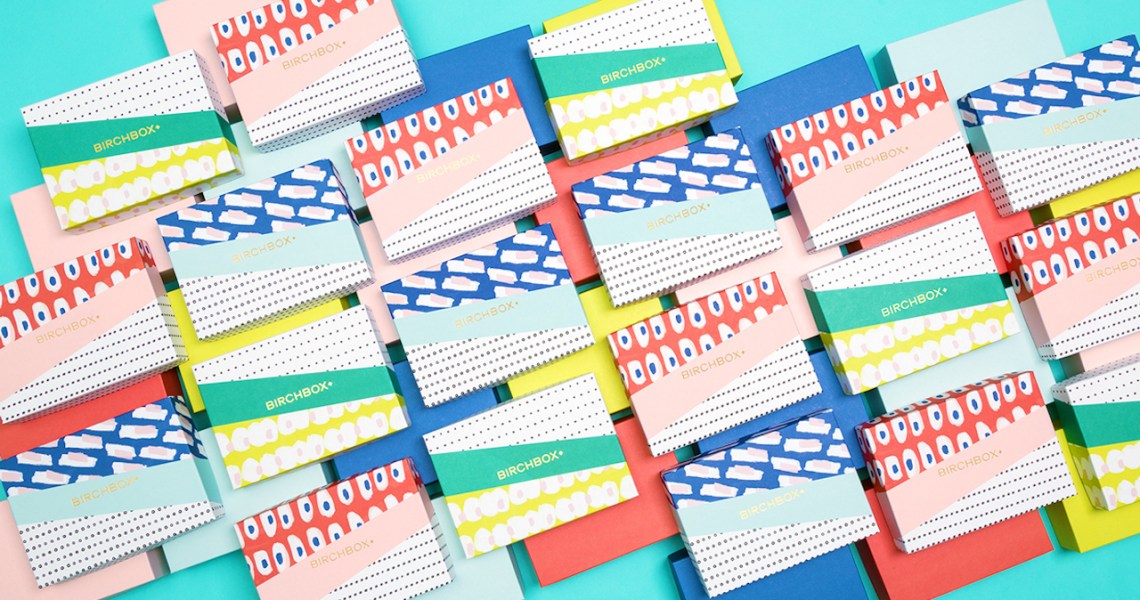The landscape of the subscription category is rapidly shifting, but currently beauty boxes are a small luxury that’s resonating with customers.
While subscriptions for clothing companies like Rent The Runway have suffered, once-jeered meal kit companies like Blue Apron have seen an uptick in business. Before coronavirus, the beauty subscription box category was in limbo, and discussion around subscription fatigue has been around since at least 2016. Prior to stay-at-home orders issued nationwide in March, both Birchbox and FabFitFun went through significant layoffs. Birchbox cut 25% of its global staff in February, affecting the U.S., U.K. and Spain. And around the same time, FabFitFun laid off around 100 people, 18% of its staff. Sephora also ended its Play subscription after five years and replaced it with sets of products, such as “Sephora Favorites,” made up of deluxe luxury samples for $25, as well as “Hello,” offering five samples for $10, among other options. Many beauty brands were left in a lurch.
The initial jolt of coronavirus caused negative impacts on some beauty box subscriptions, like an increase in March cancellations. But as shoppers spend more time at home and continue to avoid stores, they are looking to beauty subscription boxes as a means to acquire new products.
Rodger Berman, co-CEO of Box of Style by Rachel Zoe, said that between March 8-26, subscriber growth declined by 20-30%, but that sales and subscriptions have since rebounded while retention was unaffected. Today, the daily average subscriber growth is currently 20% higher than in the first quarter, but Berman declined to state the number of Box of Style subscribers. Box of Style also has an e-commerce marketplace that sells fashion, accessory and beauty products, and marketplace sales have increased by 30% quarter-over-quarter. Box of Style subscribers have a median household income of $250,000 and their median age is 40. Sixty percent of customers do not subscribe to another box, said Berman.
In light of coronavirus, Box of Style added a “pause” function to subscribers’ accounts on May 4, which had previously only been available to customers going through the process of canceling. Across social media, Box of Style has increased its organic content strategy, introducing a weekly WFH Wednesday Workout series on Instagram Live, weekly giveaways and promos through a ‘Stay Home Surprises’ franchise on Instagram, in addition to two sweepstakes — one dedicated to “community heroes” and another for Mother’s Day. Berman said that Box of Style marketing is 90% dedicated to customer acquisition, and the company has not pulled back.
Birchbox has noticed an increase in both subscriptions and website traffic. Compared to the beginning of 2020, new subscribers since mid-March are 50% are more engaged with Birchbox through newsletters, e-commerce shopping and website visits, according to Ali Edgerton, Birchbox U.S. president. New subscriber rates across all of Birchbox’s subscription tiers (3-month, 6-month and annual) have seen an increase both daily and overall monthly, said Edgerton. She declined to provide exact figures.
Retention rates have remained on par with pre-coronavirus conditions, but the reasons for canceling have shifted, said Edgerton. Typically the second-most-cited reason for canceling was financial reasons, and that is now the No. 1 reason, said Edgerton. Since April, Birchbox has also added more personal care products to its merchandising, like hand sanitizer brand Merci Handy, to corresponding trends. Meanwhile, hair, fragrance and body categories have all seen a 15% sales increase month-over-month. And new sleep, CBD, shower and nail kits that can be bought through the e-commerce shop (and not via subscription) have become best sellers.
Birchbox pivoted away from its original intention of taking on Sephora and opening brick-and-mortar stores to start working with Walgreens in 2018, which can now be seen as a silver-lining. Birchbox has shop-in-shops within 12 Walgreens. Edgerton declined to comment on any upcoming changes to the partnership, due to coronavirus.
Not all subscription businesses have seen either increased cancellations or subscriber growth; some are simply maintaining business as usual.
Joe Martin, BoxyCharm founder and CEO, said that BoxyCharm retention has stayed nearly the same since the beginning of coronavirus, but he declined to cite specifics. Seven-year-old BoxyCharm has over 1 million subscribers and hit $137 million in revenue in 2018. In 2019, BoxyCharm adjusted its quarterly box option, so subscribers could pick which non-beauty items they want to include in their box.
“While that shift occurred pre-Covid 19, it helped a lot through this period because we know people are not going to go to the store to buy. Allowing them to choose made it a better experience for them,” said Martin.
In April, BoxyCharm introduced more non-beauty items like vitamins and other wellness products into its monthly e-commerce shopping events at member-only prices. This led to an increase in retention and encouraged consumers to renew their subscription, said Martin. He declined to provide specific figures. He added that BoxyCharm has not pulled back on marketing specifically due to coronavirus, which consists of digital advertising on Facebook and Instagram, as well as via influencers, but he said there had been some pullbacks in digital advertising as an ordinary course of business as the company reaches its customer acquisition goals. He hypothesizes that the few days in April where there were an above-average number of new subscribers were tied to the arrival of federal stimulus checks, but is cautious of how much coronavirus has attributed to current growth.
“In April we saw some strong [new customer acquisition] days, but over the last two months, spikes were usually correlated to the quality of the box or other factors,” he said. “We had been growing significantly pre-Covid-19.”




